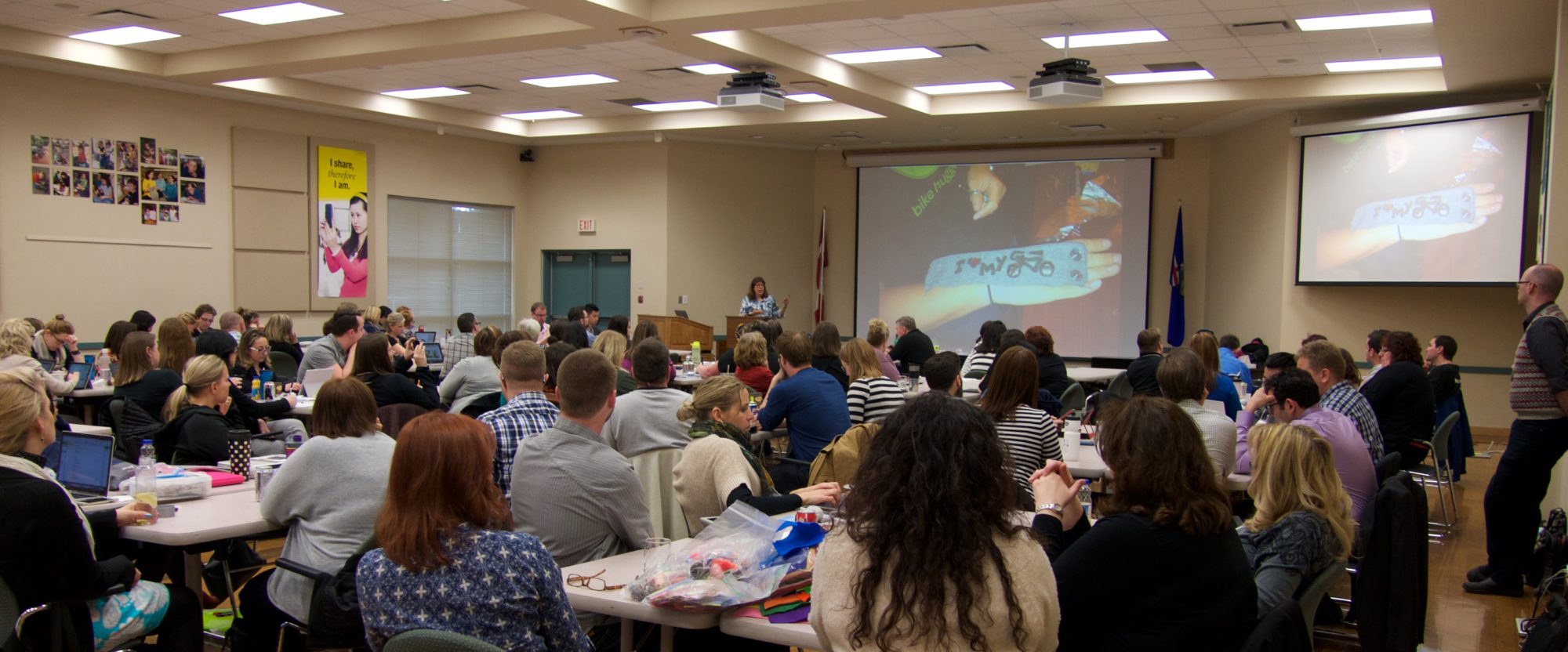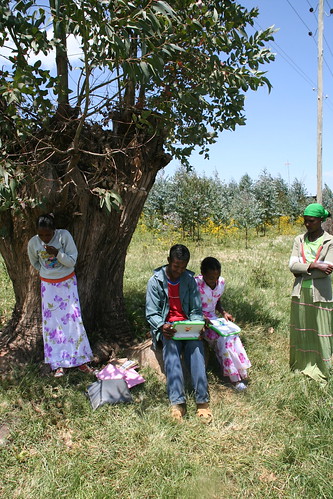OK all you smart people out there, I need your help!
I have a new resource to share about creating student-run help desks in schools, something like you find in Apple stores called Genius Bars. It’s currently in draft as a PDF of about 6,000 words The Genius Bar Goes to School. I’d love for you to to take a look at it… if you promise to help me with these questions.
In the “olden days” (like last year) I would have made it into a PDF, uploaded it to the Generation YES Free Resources website section, written a blog post or two about it, tweeted a bit, and that would be that.
But times have changed and I need to know if that’s the best I can do. There are so many new formats. There are all kinds of new things happening with sharing, remixing, repurposing that could happen around the concept of student-run help desks. There could be a shared tag, a hashtag, a number of tools like Scoop.it, wikis, etc.
So I’m thinking out loud and asking you – what’s the best way to get the most out of this document?
So – here are my current thoughts and questions. Please help me out by adding comments or challenging my assumptions.
1. Format. It’s a PDF right now, created from a Word document. The thing I like about a PDF is that it’s a compact, nice looking format. Everyone can read it, download it, share it. It prints nicely and emails easily. It’s a pretty universal format for all computers and devices.
Assumptions: I assume that people who are interested in the subject need something like a PDF to download, print out, and share with others. Is this a valid assumption?
Questions: What IS the best format? If you are an educator and you want to walk into a meeting and share this with your colleagues, what works best? Am I right to assume this scenario actually happens? If not, what would most help a person who wants to advocate for setting up a student-led help desk at their school?
Is printing important? (Because e-books don’t print easily or nicely.)
But these days are e-books the way to go no matter about printing? Which format(s)? How many different ones do I have to do?
Should I make it a Google doc? If so, should it be editable? What if I don’t like the changes people make? Do I have to worry about spam? Is a Google doc worth doing if it’s not editable?
Should I post it as HTML? As a blog post? (It’s a bit long for a single post.)
I would appreciate input on what formats are the most useful for both reading and for sharing. Because the most important thing I want to do with this document is to help people take action.
2. Community input. I would love it if there was a way people could contribute their ideas, experiences, photos, videos, or other things. How could I facilitate this? What tools, sites, etc. are best? On the other hand, there is nothing sadder than an empty social site begging for involvement. What if people don’t want to share or need to share? I’m assuming that there is a lot of interest in this and a need to share models – is that a valid assumption?
3. Copyright, creative commons, or what? Yes that is a copyright on the document. But I’m open to changing it. Tell me why – is the copyright preventing you from doing something with this document that would really be great? Would a creative commons license be better? Which of the creative commons flavors is right for this? (I would probably choose this one: Attribution-ShareAlike 3.0 Unported (CC BY-SA 3.0) – but do you agree?)
4. Just one big contraint — it can’t take too much time. I’m not being lazy, but I have to be realistic about this. Yes I could make it a Kindle book, an ibook, e-book, a whole new website, a podcast, videos etc, but I need to be sure it’s worth the time and effort. Nor do I want to create a headache if I have to change something, and then have to worry about 27 different versions that have to be changed. And finally, I wish I did, but I don’t have time to do anything that involves vetting or editing other people’s content, getting permissions, or things like that.
In short, I want to do the least amount of work to create the most effective, convenient resource(s) for people who want to implement student-led help desks and I need your help to figure out what that means!
Thanks in advance…
Sylvia





 However, I do not think that OLPC is saying this is a “new” approach, implying that they are not going to work with schools any longer.
However, I do not think that OLPC is saying this is a “new” approach, implying that they are not going to work with schools any longer.